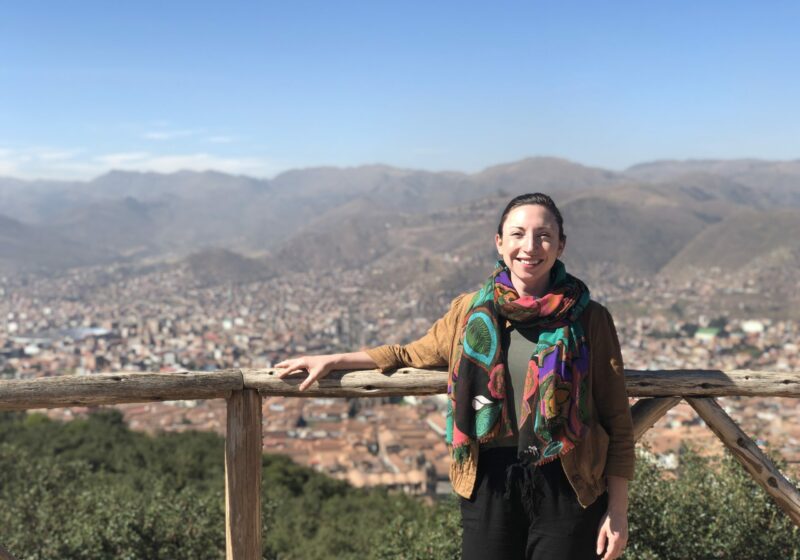A trip to the Amazon is a reminder we’re meant to walk through life using all five senses. In the rainforest, cast your gaze upon a canopy painted in an impossibly vibrant spectrum of green; open your ears to the raucous soundtrack of the jungle; bite into fruits so foreign in shape and texture they almost seem alien; inhale the earthy aromatics of the steamy, dense brush; and if you’re lucky, feel the hairs of your neck stand on end when locking eyes with a reclusive jaguar.

Which Amazon experience?
To help appreciate the rambling expanse of the Amazon Basin, one can compare it to the size of the contiguous United States—less Montana. Brazil claims the lion’s share, but countries like Peru and Ecuador are graced with vast tracts, too. Peruvian Amazonia occupies 60 per cent of the country’s land size, while one-third of Ecuador is carpeted by the Amazon rainforest.
In determining which Amazon experience you want, the decision should not be qualified by each country’s rainforest offering, so much as determining what else you plan to do on your South American jaunt, and where you prefer to stay: aboard a ship or at a land-based lodge.
It would be wrong to describe an excursion into the Amazon as a travel afterthought, but as a trend, most travelers consider it an add-on. Whether boat- or land-based, Amazon visits typically span three or four nights, leaving ample room in an itinerary to experience other South American crown jewels like the Galápagos Islands, Ecuadorian cloud forest, or Machu Picchu and the Sacred Valley. In some cases, proximity to these legendary places will determine whether the Peruvian or Ecuadorian Amazon is the preferred choice—though flights between Lima and Quito are short, easy connections to make and travelers should not rule out mixing-and-matching Peru’s attractions with Ecuador’s Amazon and vice versa.
Those who prefer a cruise itinerary have no such decision to make; luxurious sleep-aboard Amazon experiences are only possible in Peru, apart from one river cruise in Ecuador—the Anakonda.
However, if the decision is not so simple, this guide will parse out the differences between the Ecuadorian Amazon and Peruvian Amazon travel offerings.
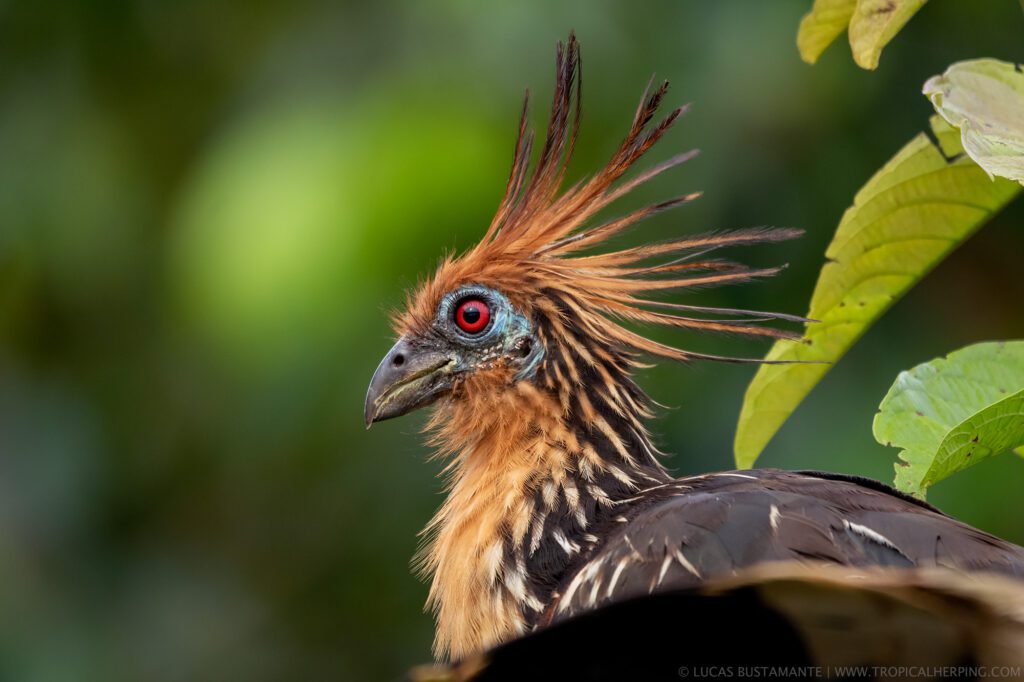
The Best Amazon Access for Travelers: Tie
While the journey from Ecuador or Peru’s gateway cities and communities to the lodges need not be an arduous one, it is one that requires multiple modes of transportation. Typically, a short flight from Lima or Quito, followed by a 30-to-45 minute ground transfer and then a boat/motorized canoe ride to the lodge. In both countries, travelers can start their day in the capital and be checked in by the afternoon.
In Ecuador, Extraordinary Journeys’ Head of South America and Safari Specialist Emily Cottingham unequivocally recommends experiencing the Amazon within Yasuní National Park and Biosphere Reserve. Fairly compact (twice the size of Delaware) and 99.73 percent undeveloped, it boasts some of the highest per-square-foot biodiversity on planet Earth. The journey to Yasuní involves a 40-minute flight from Quito to Francisco de Orellan (colloquially referred to as El Coca or simply, Coca) and a two-hour motorized canoe ride up the Napo River—a portion of the trip that’s as scenic as it is logistical.
In Peru, Tambopata National Reserve is held among the premier lodge-based Amazon experiences. Puerto Maldonado is the gateway to the Reserve and is serviced by flights from both Lima and Cuzco. From there, a land transfer brings visitors to a departure point on the Tambopata River and the lodges are reached by boat.
Travelers cruising the Peruvian Amazon fly from Lima to Iquitos and then drive 62 miles south to Nauta. From here, boats depart on itineraries along the Marañón or Ucayali Rivers which bring travelers into Pacaya–Samiria National Reserve.
The Best Amazon Lodges in Ecuador
Our top picks for Amazon lodges in Ecuador are all located within a few miles of one another and set back from the Napo River on their respective lakes, deep in Yasuní National Park and Biosphere Reserve. Five-star properties aren’t available in the Ecuador Amazon rainforest but that’s not to say these lodges aren’t comfortable, updated, and architecturally stunning. Activities and programming focus on land-based excursions (walkabouts during the day and after dark) or suspended in the rainforest canopy. Travelers tend to book packages structured around a three-night minimum stay though the option to stay longer certainly exists.

Napo Wildlife Center Ecolodge, the only lodge located inside Yasuní National Park, is 100 percent community-based, pursuing a sustainable eco-tourism model which employs Indigenous Kichwa Añangu people and re-invests into community projects. Guests can anticipate cultural encounters where they’ll learn about ancestral customs and traditional practices, enjoy guided daily forest walks (including ascending a 118-foot observation tower) and canoe excursions along an ambling creek, or take part in birding, wildlife, and photography tours. The lodge features 20 guest cabins for a serene, reclusive getaway.
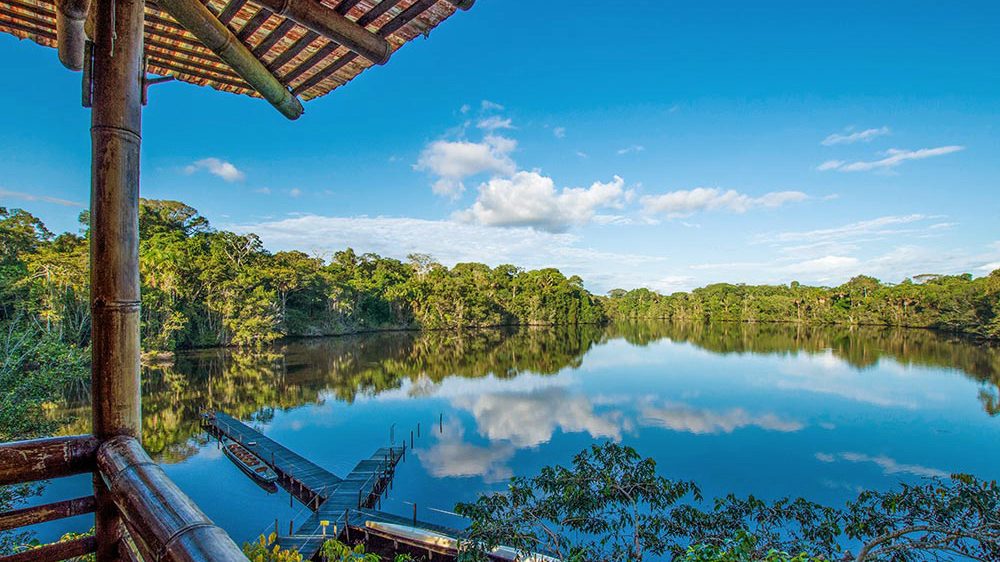
La Selva Amazon Ecolodge & Spa is perched on the shore of Laguna Garzacocha and offers 19 self-contained suites—three of which are water-facing and feature tantalizing rainforest showers. Yoga sessions and an ambient jungle spa boasting a comprehensive menu of à la carte services emphasize La Selva’s wellness focus. Excursions into the Ecuador Amazon Rainforest are accompanied by two guides: an expert naturalist and an Indigenous guide to help guests spot wildlife and interpret the natural environment.
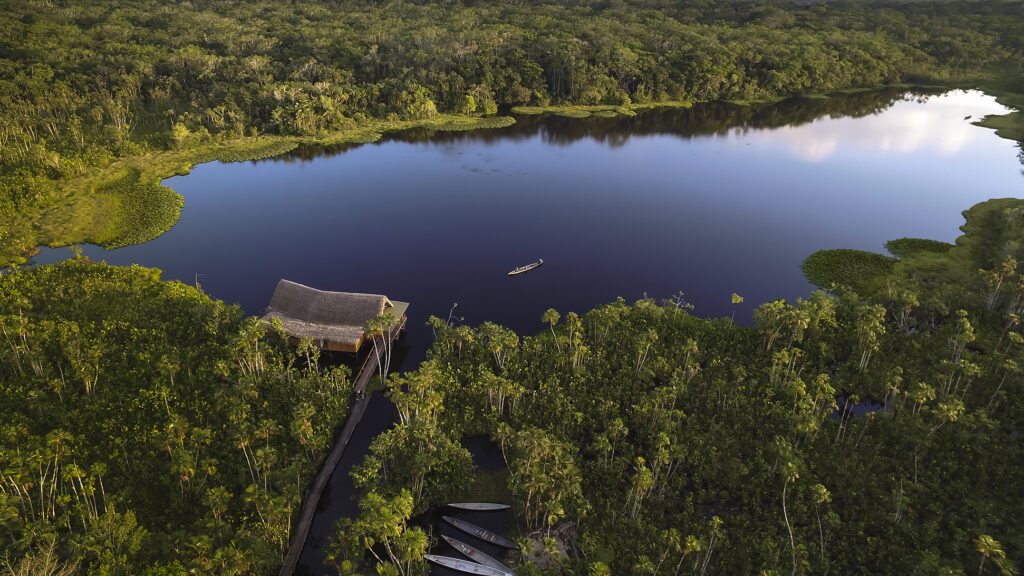
Refined-meets-rustic at Sacha Lodge, Emily’s top pick for an elevated lodging choice in the Ecuadorian Amazon. The property offers 26 rooms, three family cabins, and a mesh-netted plunge pool so guests can swim the inky black waters of Pilchicocha Lake. At Balsa, the lake-adjacent, al fresco dining lounge, it’s hard to resist taking in the sunset with a sundowner in hand. Also impossible to ignore: the allure of walking along Sacha Lodge’s 940-foot Canopy Walk, a bridge suspended 94 feet above the treeline.
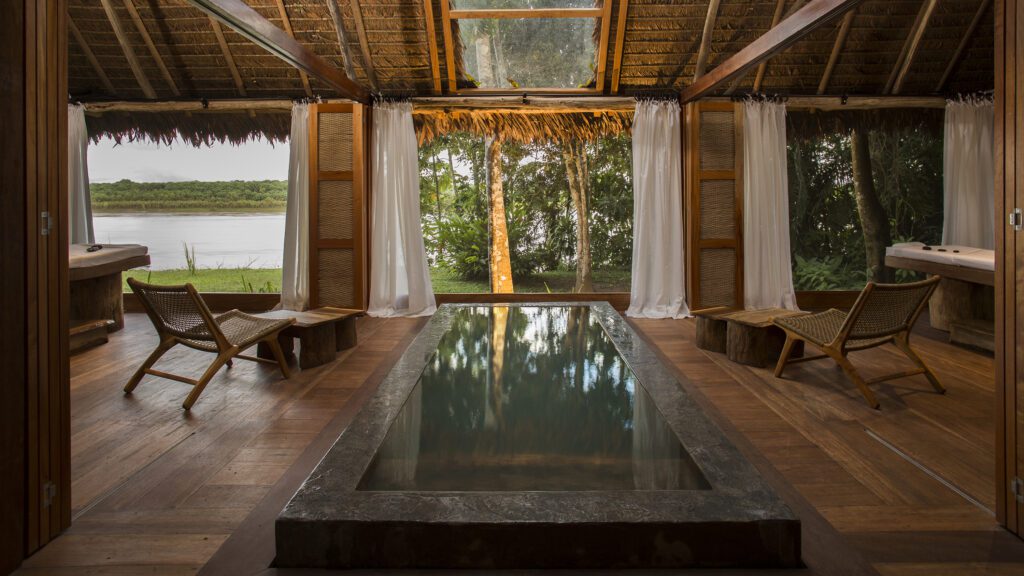
The Best Amazon Land-based Lodges in the Peruvian Amazon
In Peru, travelers can choose between land-based and boat-based Amazon experiences. Our top picks for land-based lodges are all located in or near Tambopata National Reserve.
Relative to Ecuadorian lodges, the Peruvian Amazon’s offerings are comparable, but Emily describes the excursions as “very involved and immersive.” Think: trekking for anacondas, piranha fishing, macaw-spotting at clay licks (a bird-watchers hot spot), or swimming among pink river dolphins, which are endemic to the Amazon Basin, and considered a threatened species. Where Ecuador’s Amazon experiences can be considered generalist, Peruvian Amazonas activities can be much more niche.
Tambopata Research Center is the most remote ecolodge located within the Reserve and as the name suggests, offers guests the opportunity to engage in citizen science. There are 24 rooms—some suites boast private outdoor terraces (hammock included) and outdoor bathtubs—and the property is threaded by nearly 1,000 feet of elevated walkways. A trip to Tambopata Research Center also includes an excursion to the region’s two most significant clay licks: Colorado and Chuncho.
A sister property to Tambopata Research Center, Refugio Amazonas is a 35-room jungle lodge enveloped by 495 acres of Brazilian nut forest. Comparatively speaking, it is situated upstream in what’s referred to as the buffer zone (technically, adjacent to the Reserve not within it), near a series of oxbow lakes—a unique rainforest habitat unto itself, rife with biodiversity. Refugio Amazonas shares the same citizen science programming and in simplest terms, differentiates itself from the Research Center by budget, location, and access. (Reach Refugio Amazonas in approximately two hours; allocate three-and-a-half hours for the Center.)
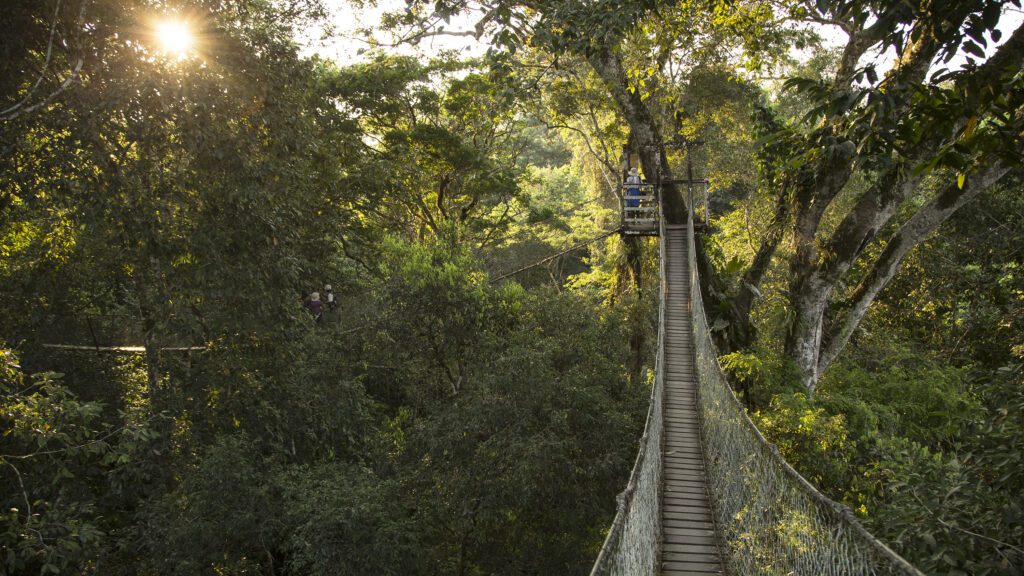
Situated in front of Madre de Dios River and in close proximity to Tambopata National Reserve, Inkaterra Reserva Amazonica features 35 stunning wooden cabanas influenced by Indigenous Ese’Eja culture. Although it doesn’t nab a five-star rating, travelers enjoy the luxurious amenities and services that the Inkaterra brand is known for. (It can brag that it once ranked among the world’s 25 best eco-lodges as determined by National Geographic Traveler though.) Don’t miss traversing the 1,320-foot-long Inkaterra Canopy Walkway, a bridge suspended 98 feet above ground, nor Ena Spa, where treatments involve locally derived botanical ingredients.

The Best Amazon Boat Cruises in Peru
Cruising is the most elegant, refined, and luxurious way to experience the Amazon. Boats offer guests a level of exclusivity, coupled with the opportunity to travel deeper into untouched pockets of wilderness.
Departures on the Relais & Châteaux-associated, triple-decker Delfin I and Delfin II are popular with luxury travelers—for so many reasons. Three- and four-night itineraries ply the waters of the Marañón and Ucayali Rivers, letting guests experience the Amazon within Pacaya-Samiria National Reserve. A sampler of excursions accessed via zippy skiff boats are included in the cruise rate and completely voluntary—so be as adventurous as you want to be. Delfin I features just four oversize king suites while Delfin II totals 14 cabins. And unlike the land-based eco-lodges, cruise-goers enjoy air-conditioned cabins. Suites feature floor-to-ceiling windows, and some even have private plunge pools.
Another premium offering operating on the same waterways is Aqua Expeditions. Specifically, the recently debuted and newly constructed Aqua Nera. She features 20 handsomely designed and decorated suites spanning two decks and a host of amenities including air conditioning throughout, a curated artisanal boutique, a cinema room, and fashionable lounge spaces. In the dining room, Chef Pedro Miguel Schiaffino serves contemporary rainforest-to-table cuisine.
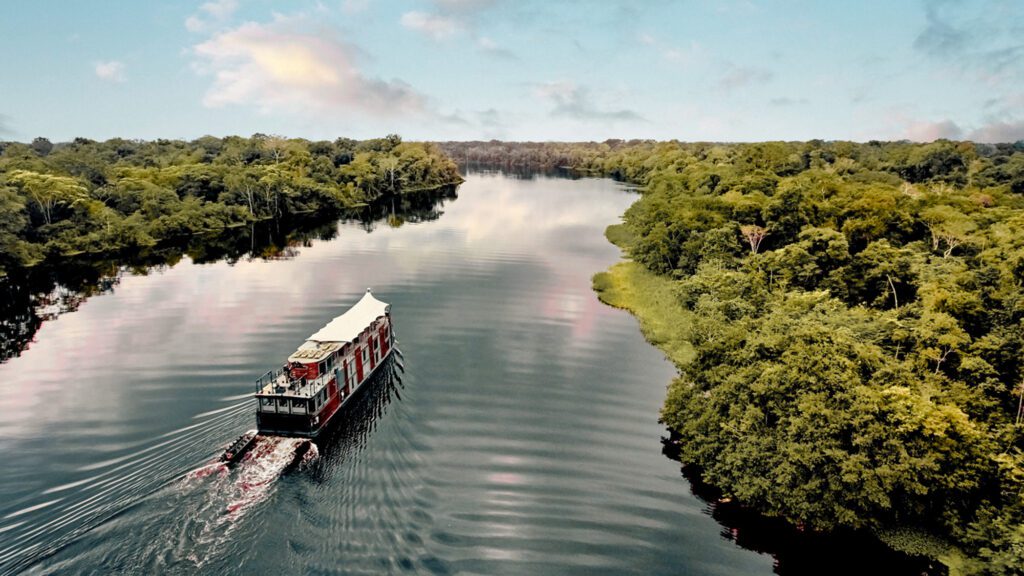
The Best Luxury Tour of the Amazon: Peru by Boat
There are no five-star land-based lodges in Peru or Ecuador’s Amazon. Travelers craving the elevated dining, lodgings, and guest service associated with Relais & Châteaux are best advised to book passage on the Delfin II. If cruising is not of interest, our picks are Inkaterra Reserva Amazonica in Peru and Sacha Lodge in Ecuador.
The Best Amazon Tours for the Budget: Ecuador
For the best value, choose a lodge-based property in the Ecuadorian Amazon where a three-night all-inclusive package can start at USD $1,420 per person. Comparatively, room rates in our preferred land-based Amazon lodges start at USD $621 per night, plus à la carte activities and dining.
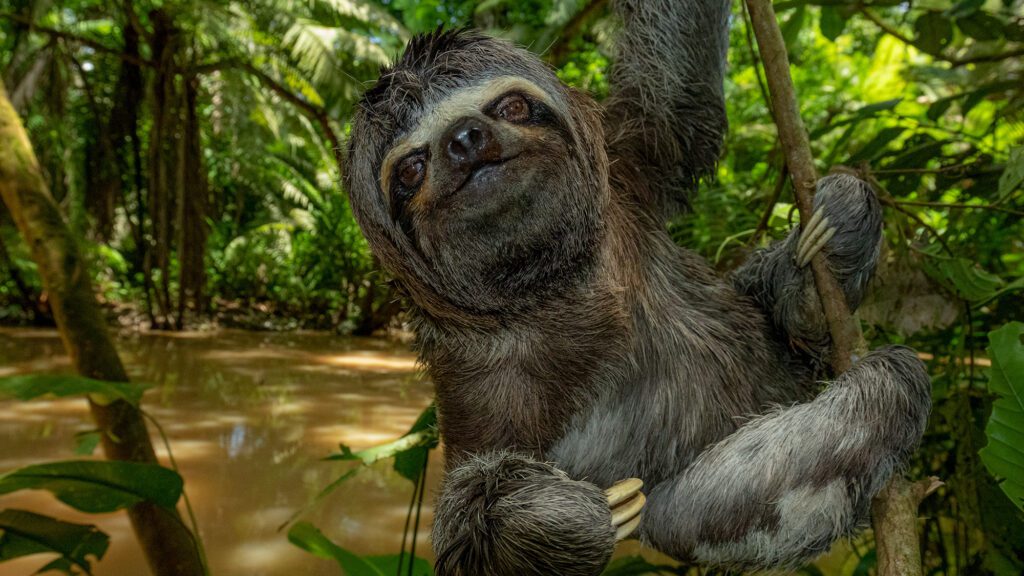
The Best Tours for Families: Ecuador
When it comes to traveling with kids, time zones and flights can ease—or strain —a trip, which is why a visit to South America is so family-friendly.
Flying from North America, an easy north-south and oftentimes direct flight into Lima or Quito means the friction of jumping time zones, navigating jet lag, and getting back to the bedtime schedule is minimized. Happier kids, happier parents.
What’s more, compared to multi-week trips to Africa and Asia, a trip to Peru or Ecuador can be more gracefully shoehorned into the school calendar. Eight to 10 days is ample time to enjoy multiple highlights in each destination without feeling rushed or overcommitted.
In terms of the better choice of Peruvian or Ecuadorian Amazon experience, both are wonderful but Emily feels that Ecuadorian lodges have a slight edge. It’s not to say that Peruvian Amazon lodges aren’t family-friendly, but she favors the programming and activities of Napo Wildlife Center Ecolodge. Pairing a visit with the wonder and wildlife of the Galápagos Islands creates a standout travel experience the kids won’t soon forget. Ecuador is also the more budget-conscious choice which may be a factor when traveling with many littles in tow.
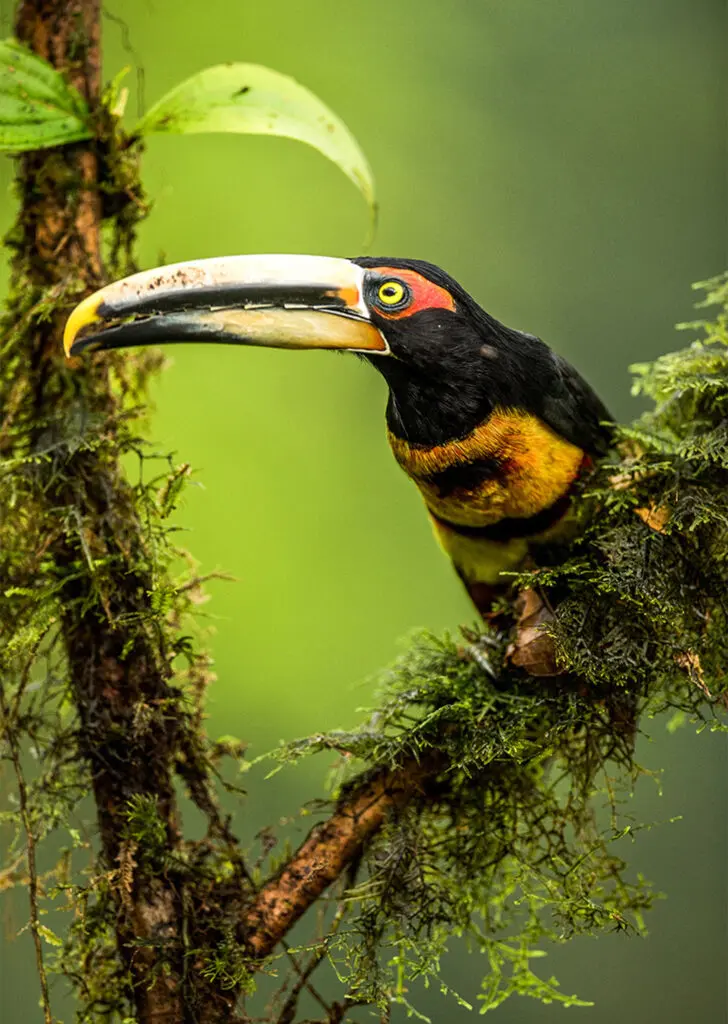
The Best Amazon Tour Destinations for Seeing Exotic Animals: Tie
Unlike the grassy plains of Africa, wildlife sightings in the Amazon are not assured. The wildlife that stalks the floor of the rainforest or trapezes through the canopy are elusive, choosing when—and if—they want to be seen.
In terms of biodiversity, both Ecuador and Peru punch above their weight, and unless travelers are hoping to train their gaze on a very specific species—like pink river dolphins—the difference in the wildlife viewing opportunities between these neighboring nations is not acute.
Generally, you might keep your eyes out for macaws, toucans, harpy eagles, paradise tanagers, royal flycatchers, capybaras, sloths, Amazon tapirs, armadillo, pumas, jaguar, spider monkeys and squirrel monkeys, otters, green anaconda, caiman, poison dart frogs…and quite literally, thousands of other species of reptiles, birds, insects (including multi-colored butterflies), and mammals.
As a footnote, it is worth reiterating that Yasuní National Park and Biosphere Reserve boasts some of the highest per-square-foot biodiversity in the world, setting the stage to encounter many species of birds, reptiles, and mammals in a relatively compact area
Ready to pack your bags?

- Itinerary
Highlights of Peru: Machu Picchu & the Amazon
Cruise the Amazon and explore the wonders of Machu Picchu and Cusco
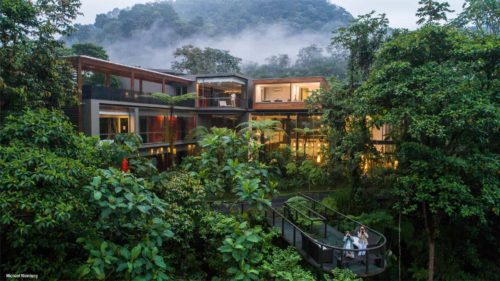
- Itinerary
Ecuador Wilderness and Wildlife
Historic Quito, luxury Galapagos cruise, Amazon Jungle, and enchanting Cloud Forest

